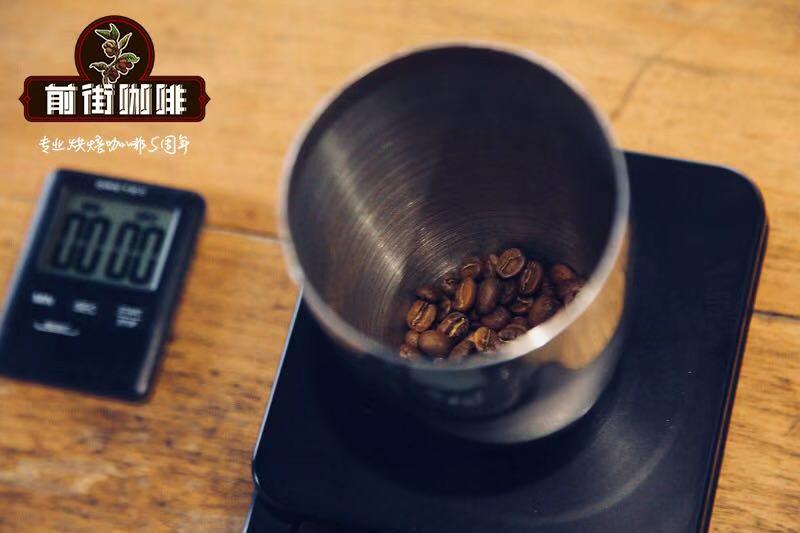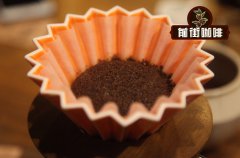What are the kinds of Panamanian coffee beans? why Rosa coffee tastes sour?

Professional coffee knowledge exchange more coffee bean information please follow the coffee workshop (Wechat official account cafe_style)
Introduction of Panamanian varieties in Qianjie
Panama is near the equator and has a tropical maritime climate. It is humid during the day and cool at night. The annual average temperature is 23-27C °. The whole year is divided into two seasons: drought and rain, with an average annual precipitation of 1500m3 2500mm. The microclimate of the Panamanian highlands is the most important resource that makes Panamanian coffee unique. The east-west environment of the Republic of Panama allows cold air to flow through the Central Mountains at more than 6500 feet (about 1981 meters), thus creating a variety of microclimates in the Boquete and Volc á n-Candela regions, making it a major producer of Panamanian coffee.
These specialty coffees are grown in nutrient-rich and balanced land in the Baru volcano region, one of the Central American volcanoes. The Baru volcano has an altitude of more than 11400 feet, and the land around it is rich in nutritious and fertile soil, providing sufficient conditions for the sowing and cultivation of coffee endemic to Panama. The appropriate microclimate, soil, temperature and height of these highlands are suitable for sowing, planting and harvesting a variety of unique coffees. These coffees have jasmine, citrus, ripe fruit, berries, caramel, special sweetness, vanilla, chocolate and other flavors.
Panamanian coffee is most famous for its rare treasure-Rosa Coffee.
Geisha was discovered in the rose forests of Ethiopia in 1931 and sent to the Coffee Institute in Kenya; it was introduced to Uganda and Tanzania in 1936 and in Costa Rica in 1953. In Panama in the 1963, Mr. Don Bachi Francesco Zelachin, then working for the Panamanian Ministry of Agriculture, received the seeds from the well-known Centre for Tropical Agricultural Research and higher Education in Costa Rica (CATIE) and began to grow rosy summer coffee, which was not easy to come by because of extremely low yields and bidding.
Geisha, which is grown in many parts of the world, is the new king of boutique coffee, with high quality and high prices in Latin American countries such as Panama, Guatemala and Colombia.
The dry aroma of Rosa is very bright, with aromas of rose and jasmine, with aromas of pomelo and citrus, light baked with nutty aromas, and wet aromas with hazelnut and more floral characters. In terms of taste and flavor, compared with the previously rising aroma, it may be slightly mild and subtle, a little cooler, the flower and fruit flavor gradually increases with the drop in temperature, and the cold aroma is excellent, with sweet preserved fruit, rose fruit, orange glaze jam and strawberry jam. Silk pine, cherry, vanilla, rose flavor gradually fade, lemon flavor can be derived. This is a coffee that can be praised by a large number of adjectives.
END
Important Notice :
前街咖啡 FrontStreet Coffee has moved to new addredd:
FrontStreet Coffee Address: 315,Donghua East Road,GuangZhou
Tel:020 38364473
- Prev

What does COE Coffee coe Coffee mean? what is the competition of coe Excellence Cup Coffee coe Evaluation refers to
Professional coffee knowledge exchange more coffee bean information please follow the coffee workshop (Wechat official account cafe_style) Zhuoyu Cup? The Outstanding Cup is the most prestigious competition and auction of high quality coffee. The rigorous scrutiny of the excellent cup of coffee is unparalleled anywhere in the professional coffee industry. Every year, thousands of coffees are submitted to auctions with
- Next

Anaerobic treatment of coffee beans anaerobic fermentation of coffee beans
Professional coffee knowledge exchange more information about coffee beans Please follow the coffee workshop (Wechat official account cafe_style) generally speaking, anaerobic means anaerobic. You may ask, how is this associated with a coffee fermentor usually in an open space? A: coffee is placed in a sealed stainless steel container. In addition to producing new and unexpected flavors, the anaerobic process provides a high level of control.
Related
- Beginners will see the "Coffee pull flower" guide!
- What is the difference between ice blog purified milk and ordinary milk coffee?
- Why is the Philippines the largest producer of crops in Liberia?
- For coffee extraction, should the fine powder be retained?
- How does extracted espresso fill pressed powder? How much strength does it take to press the powder?
- How to make jasmine cold extract coffee? Is the jasmine + latte good?
- Will this little toy really make the coffee taste better? How does Lily Drip affect coffee extraction?
- Will the action of slapping the filter cup also affect coffee extraction?
- What's the difference between powder-to-water ratio and powder-to-liquid ratio?
- What is the Ethiopian local species? What does it have to do with Heirloom native species?

